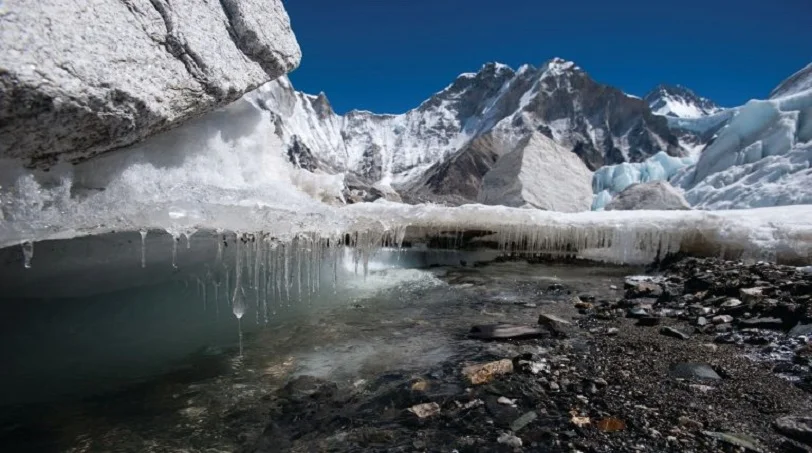
London- Glaciers in the Himalayas are melting at an “exceptional” rate because of global warming, threatening the water supply of millions of people in Asia, according to a study published on Monday.
The researchers found that the Himalayan glaciers have lost ice ten times more quickly over the last few decades than on average since the last major glacier expansion 400-700 years ago, a period known as the Little Ice Age.
The study, published in the journal Scientific Reports, also shows that Himalayan glaciers are shrinking far more rapidly than glaciers in other parts of the world.
A team led by researchers at the University of Leeds, UK, made a reconstruction of the size and ice surfaces of 14,798 Himalayan glaciers during the Little Ice Age.
They calculated that the glaciers have lost around 40 per cent of their area — shrinking from a peak of 28,000 square kilometres (km2) to around 19,600 km2 today.
During that period they have also lost between 390 cubic kilometres (km3) and 586 km3 of ice, the researchers said.
The water released through that melting has raised sea levels across the world by between 0.92 millimetres (mm) and 1.38 mm, they said.
“Our findings clearly show that ice is now being lost from Himalayan glaciers at a rate that is at least ten times higher than the average rate over past centuries,” said study corresponding author Jonathan Carrivick, from the University of Leeds.
“This acceleration in the rate of loss has only emerged within the last few decades, and coincides with human-induced climate change,” Carrivick said.
The Himalayan mountain range is home to the world’s third-largest amount of glacier ice, after Antarctica and the Arctic and is often referred to as ‘the Third Pole’.
The acceleration of melting of Himalayan glaciers has significant implications for hundreds of millions of people who depend on Asia’s major river systems for food and energy, the researchers said.
These rivers include the Brahmaputra, Ganges and Indus, they said.
The team used satellite images and digital elevation models to produce outlines of the glaciers’ extent 400-700 years ago and to reconstruct’ the ice surface.
The satellite images revealed ridges that mark the former glacier boundaries and the researchers used the geometry of these ridges to estimate the former glacier extent and ice surface elevation.
Comparing the glacier reconstruction to the glacier now, determined the volume and hence mass loss between the Little Ice Age and now.
The Himalayan glaciers are generally losing mass faster in the eastern regions — taking in east Nepal and Bhutan north of the main divide.
The study suggests this variation is probably due to differences in geographical features on the two sides of the mountain range and their interaction with the atmosphere — resulting in different weather patterns.
Himalayan glaciers are also declining faster where they end in lakes, which have several warming effects, rather than where they end on land, the researchers said.
The number and size of these lakes are increasing so continued acceleration in mass loss can be expected, they said.
Glaciers which have significant amounts of natural debris upon their surfaces are also losing mass more quickly, contributing around 46.5 per cent of total volume loss despite making up only around 7.5 per cent of the total number of glaciers.
“While we must act urgently to reduce and mitigate the impact of human-made climate change on the glaciers and meltwater-fed rivers, the modelling of that impact on glaciers must also take account of the role of factors such as lakes and debris,” Carrivick added.
Follow this link to join our WhatsApp group: Join Now
Be Part of Quality Journalism |
Quality journalism takes a lot of time, money and hard work to produce and despite all the hardships we still do it. Our reporters and editors are working overtime in Kashmir and beyond to cover what you care about, break big stories, and expose injustices that can change lives. Today more people are reading Kashmir Observer than ever, but only a handful are paying while advertising revenues are falling fast. |
| ACT NOW |
| MONTHLY | Rs 100 | |
| YEARLY | Rs 1000 | |
| LIFETIME | Rs 10000 | |











